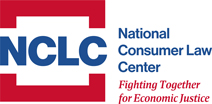For Immediate Release: October 18, 2018
National Consumer Law Center contact: Jan Kruse, jkruse@nclc.org or (617) 542-8010
NCLC 50-State Review of Consumer Protection Laws for a $10,000 Five-Year Installment Loan
Download the full report, including summaries of the laws of 50 states and Washington, D.C., plus a map, charts, and tables, complete list of recommendations, and a summary of the laws in each state and the District of Columbia that apply to a $10,000 five-year non-bank loan. http://bit.ly/2QOp6AG
Boston – Everything that is wrong with a high-cost loan is only made worse when the loan is larger and longer. Yet, 12 states place no numerical cap at all on the annual percentage rate (APR) for a $10,000 five-year non-bank installment loan, leaving 90 million people in the United States subject to triple-digit annual percentage rates (APR) on predatory installment loans, according to a new report from the National Consumer Law Center. These high-cost installment loans can trap people in a cycle of debt that can be nearly impossible to escape.
“Our analysis shows a general consensus among the states that APR caps should be well below 36% for these larger, longer-term loans,” said National Consumer Law Center Deputy Director Carolyn Carter, the primary author of the report.
A Larger and Longer Debt Trap? Analysis of States’ APR Caps for a$10,000 Five-Year Installment Loan examines the maximum APR, including both interest and fees, allowed in each state and the District of Columbia for a $10,000 five-year loan. The report finds that, for a $10,000 five-year loan, 7 states (Alabama, California, Idaho, New Mexico, South Carolina, Utah, and Wisconsin) impose no numerical rate cap other than a prohibition of rates that shock the conscience, and the lending laws in Delaware, Missouri, North Dakota, Ohio, and Virginia impose no limit at all.
In comparison, for a $10,000 five-year loan, 39 jurisdictions have APR limits in place, at a median rate of 25%, protecting 236 million people. Nearly 70% (27 of these jurisdictions) cap APRs at 27% or less. Only two states have APR limits above 36%: Nevada allows APRs as high as 40%, and Georgia allows a 60% APR.
Twenty jurisdictions (Alaska, Arkansas, Colorado, Connecticut, the District of Columbia, Florida, Hawaii, Indiana, Kansas, Kentucky, Maine, Maryland, Massachusetts, Minnesota, Nebraska, New York, Oklahoma, Rhode Island, Vermont, and Wyoming) limit the maximum APR for a $10,000 five-year loan to 25% or less. Arkansas, Maine, and Vermont have APR limits of 17%, 18%, and 18%, respectively.
Eleven states (Arizona, Louisiana, Michigan, Mississippi, New Jersey, North Carolina, Pennsylvania, Tennessee, Texas, Washington, and West Virginia) have an APR limit between 26% and 30%. Most of these states—seven of them—are at the low end of this range, capping APRs at 26% or 27%. Iowa, permits a 32% APR, and five states (Illinois, Montana, New Hampshire, Oregon, and South Dakota) allow 36%.
Key Recommendations for States
- Limit APRs. An APR cap is the single most effective step states can implement to deter abusive lending—protecting consumers from excessive costs and giving lenders an incentive to ensure ability to repay. An APR cap of about 25% is at the high end of what is reasonable for larger, longer-term loans such as a $10,000 five-year loan, and represents the median among the 39 jurisdictions that cap the APR for such a loan. States with caps of 25% or less should preserve their caps, states that have higher caps should reduce them, and states that do not have a numerical cap should impose one.
- Ban or strictly limit junk fees for credit insurance and other add-on products. States should place strict limits on add-on products and should require their cost to be included in the APR cap.
- Ensure that the consumer can afford to repay the loan. States should impose a duty on lenders to meaningfully evaluate whether the consumer can afford to repay the loan while covering other expenses without re-borrowing.
For the complete set of recommendations for states and additional materials, please visit: http://bit.ly/2QOp6AG
This report builds on NCLC’s extensive work on predatory lending. For more information, please visit: https://nclc-old.ogosense.net/issues/usury.html.
###
